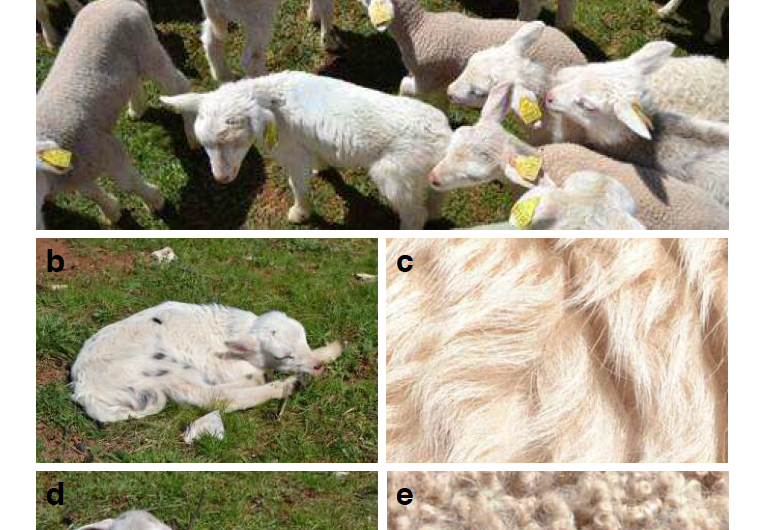So sheep may safely graze

In 1713, Johann Sebastian Bach once wrote a delightful cantata, "Sheep May Safely Graze," whose opening lyric boasts of shepherds protecting sheep from the ravages of the hunt.
Fast forward a few centuries, where now, from a large genome study, a team of French and Argentinian scientists may have successfully identified the mutations behind the sheep traits that shepherds began saving from the hunt —-for their prized wool.
Corresponding author Julie Demars and her colleagues, from the National Institute of Agronomic Research in France and a researcher from the Instituto de Genetica in Argentina were interested in identifying traits from animals being selected after domestication, and choose sheep, whose breeds are as numerous as dogs.
"Nowadays, fleece variation is actively segregating in the French Romane breed which is a composite breed between the Berrichon du Cher and Romanov," said Demars. "Due to its parental origins, this breed shows large variability in its fleece type. At birth, a highly variable coat type from a short, woolly fleece (typical to Berrichon du Cher and domestic sheep) up to a hairy, long coat (characteristic of Romanov and primitive sheep) is observed in Romane lambs."
A few years ago, researcher Daniel Allain and others showed that the birthcoat type was a very highly heritable trait within this breed.
"Here, we used the Romane breed to map, identify and functionally validated the mutation responsible of fleece variation and various sheep populations representative of both ancestral species and modern sheep breeds to genetically confirm this singular causal mutation," said Demars.
To find their needle in the haystack, their genomic study involved a total of two-thousand lambs produced from 10 unrelated rams, with a little more than half 57 percent) of the lambs presented a hairy and long coat similar to the rustic Romanov breed and the rest comparable to Berrichon du Cher individuals with a short and woolly fleece.
From their genome-wide map and whole genome DNA sequencing, they hypothesize that the identified mutation may have been caused by an ancient, dead gene (called a retrogene, because it can no longer make a functional protein) that jumped nearby a gene loci, called IRF2B2. They performed additional analysis of the IRF2B2 region and speculate on the unique molecular mechanisms for how the mutation may have occurred.
"We believe that these new genes provide intriguing general insights into molecular basis of hair folliculogenesis and might open up new fields of research."
More information: Xiang Ji et al, A Phylogenetic Approach Finds Abundant Interlocus Gene Conversion in Yeast, Molecular Biology and Evolution (2016). DOI: 10.1093/molbev/msw114
Journal information: Molecular Biology and Evolution
Provided by Oxford University Press


















